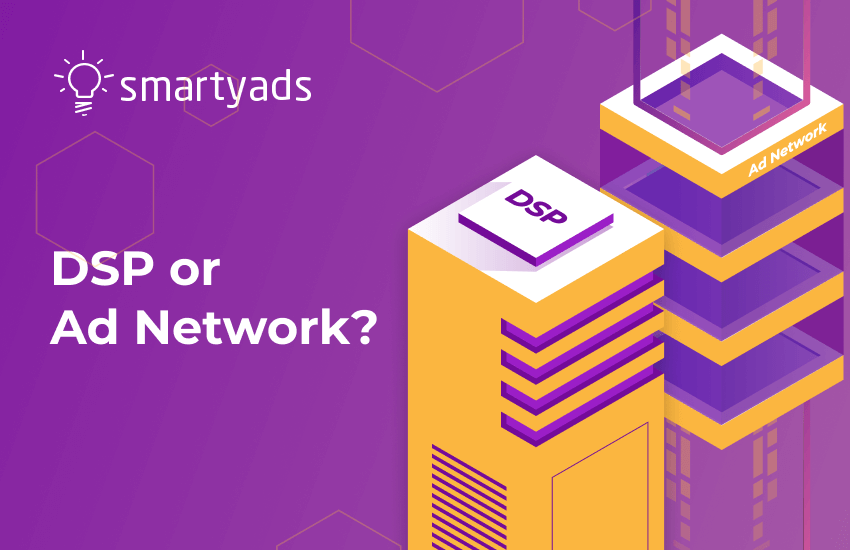The advertising industry never stands still — every few years a new channel reshapes the way brands connect with people. Today, that role belongs to retail media. With my background in programmatic and years of writing about how ad tech transforms campaigns, I’ve seen firsthand why this shift matters for both advertisers and publishers.
In this article, we’ll break down what retail media networks (RMNs) are, why they’ve become one of the hottest trends in 2025, and how they can actually deliver value beyond the buzz. You’ll discover how RMNs differ from traditional ad channels, what advantages they bring, and what to keep in mind when choosing a commerce media network for your campaigns.
If you’re a brand aiming to improve ROI, a retailer searching for new revenue opportunities, or an ad tech professional wanting to stay ahead — this guide will give you a clear picture of why RMNs are the future of advertising as well as retail media network examples.

What is a retail media network?
A retail or commerce media network is an ad platform inside a retailer’s own world. It can be a website, an app, or even in-store screens. Brands place ads right where people are shopping.
This makes the ads feel relevant, not random. Shoppers see them while browsing or buying. That timing matters.
A good retail media strategy gives brands better targeting and stronger conversions. For retailers, it opens a fresh stream of revenue. In plain words, it’s ads shown at the moment people are ready to buy. That mix of reach, data, and timing is why RMNs are booming in 2025.
How retail media networks work
Retail media networks bring together three sides: retailers, brands, and shoppers.
Retailers own the spaces where shopping happens — websites, apps, and even in-store screens. Brands pay to show ads in those spaces. Shoppers see the ads while they browse, search, or add items to the cart.
The power comes from data. Retailers know what people have searched, what they bought before, and what they might want next. That information makes ads relevant. A shopper looking for cereal may see a sponsored offer on milk. Someone checking sneakers may spot a new sportswear collection. It feels useful, not random.
Retailers gain a new stream of income on top of product sales. Their websites, apps, and stores turn into valuable ad space. Advertisers get sharper targeting and clear evidence that ads drive results. They can see what really works and plan smarter. Shoppers enjoy a smoother journey. Ads feel more like helpful suggestions than noise.
Why retail media networks are gaining popularity
Commerce media is not just a buzzword. It’s how the ad world is changing. Here’s why more brands and retailers are putting money into RMNs today:
Growing value of first-party data
Third-party cookies are losing importance for marketers. Brands still need clear and reliable ways to reach people. Shopping platforms and merchants already sit on valuable first-party data — from searches, past purchases, and loyalty programs. This data is trusted and accurate. It helps brands target better and see real results from their spend.
Increased demand for privacy-compliant advertising
Privacy rules keep getting tougher. People also pay more attention to how their data is used. Retail media answers both. It runs on consented data that shoppers share with retailers. This makes ads safer for brands and easier for customers to trust.
Ads that reach people with purchase intent
Most ads catch people when they’re not ready to buy. The retail network is different. It shows ads inside shopping environments. Shoppers are already searching, comparing, or adding to a cart. That’s why these ads convert better — they meet people at the right moment.
Extra revenue stream for retailers
Retailers don’t rely only on product sales anymore. With commerce media, they earn from ads too. It turns websites, apps, and stores into new revenue streams. This extra income helps shopping platform grow and strengthen relationships with brands.
Stronger measurement and transparency
The retail network shows clear results. Brands see impressions, clicks, and even direct sales. This makes ad spend easier to justify. It also builds trust, since performance is tied to real shopper actions, not vague metrics.
Benefits of retail media advertising
A retail media ad creates a win-win-win model. It brings value to retailers, advertisers, and everyday shoppers.
Benefits for retailers
Retailers gain more than just product sales. Their websites, apps, and even physical stores become valuable ad space. This creates a steady new income stream. At the same time, it builds stronger partnerships with brands that want access to these audiences. Relevant ads can also improve the shopping journey. Shoppers feel guided, not interrupted. Over time, that trust turns into loyalty.
Benefits for advertisers
Brands don’t want to waste money shouting into the void. With retail media, ads reach people who are already shopping. That means less guesswork and more sales. Advertisers can also see what worked and what didn’t — in real numbers, not vague clicks. It makes spending budgets a lot less stressful.
Benefits for consumers
Shoppers get a cleaner experience. No random ads following them around the internet. Instead, they see products that actually fit what they’re looking for. A quick deal on coffee when they’re buying a mug. A promo on sneakers when they’re browsing sports gear. It feels helpful, not annoying, and makes shopping smoother.

Key components of a retail media network
A successful commerce network is built from several core components that work together to connect brands, retailers, and shoppers.
On-site advertising
On-site is the backbone of retail media. It means ads placed directly on a website or app. They show up as sponsored product listings, banners, or branded content. The big difference is context. People are already shopping, so the ads don’t feel out of place. Instead, they look like helpful suggestions. A shopper searching for coffee might see a sponsored spot for a new coffee machine. That feels natural and relevant. Because the timing is right, on-site ads often lead to quick clicks, stronger engagement, and higher conversions.
Off-site programmatic campaigns
Shopping platform don’t just stop at their own digital shelves. They use first-party shopper data to reach people once they’ve left the store’s site. Ads can follow customers across the open web, on social media, and even on CTV. This keeps the brand present throughout the buying journey. A shopper who viewed a product but didn’t buy may see a reminder ad later — and that extra touch often brings them back to complete the purchase.
In-store media
The retail network doesn’t stop online. Stores are becoming digital ad spaces too. Screens near checkout, smart shelves, and kiosks display tailored offers. Shoppers notice them while making choices. A promo for a snack can appear right by the drinks aisle. It feels timely and can influence what goes into the cart.
First-party data and analytics
Data is the engine of retail media. Shopping platform know what people search, browse, and buy. This information is first-hand and privacy-safe. Brands use it to target the right shoppers with the right message. It also powers analytics, showing what works and what doesn’t. Clear data makes campaigns smarter and easier to optimize.
Reporting and attribution
Retail media shows clear results. It’s not just clicks or views. Advertisers can see which ads drove sales and how much revenue came in. This level of detail builds trust. It also helps brands spend smarter, knowing exactly what delivers return on investment.
Top retail media networks

The field is growing fast, but a few players already stand out as leaders. Each of them has its own strengths — from massive reach to unique data capabilities. Let’s look at the most influential best retail media networks shaping the industry in 2025.
Amazon Advertising
Amazon is the biggest name in the commerce ecosystem. Its reach is global, with audiences in nearly every market. Advertisers can run on-site sponsored listings or video ads on Prime Video and Twitch. The real power comes from Amazon’s shopper data and purchase insights — giving brands unmatched targeting.
Walmart Connect
Walmart Connect is all about scale in the U.S. It blends online and offline data from millions of shoppers. Brands can use on-site ads, in-store screens, and programmatic campaigns through its partnership with The Trade Desk. The strength lies in combining Walmart’s huge store footprint with its growing digital reach.
Target Roundel
Roundel is Target’s own retail media ecosystem. It focuses on creative storytelling rather than just plain ads. Brands can use sponsored listings on Target’s site or run campaigns across CTV, social, and display. The main benefit is trust — ads run in a safe, curated space that feels natural for Target shoppers.
Kroger Precision Marketing
Kroger uses its loyalty card and purchase data to target with precision. It’s especially strong in grocery and household categories. Brands can run on-site ads or expand with off-site programmatic campaigns. The big advantage is clear sales attribution — showing exactly how ads drive purchases.
Comparison table

Why retail media networks are the future
It isn’t just a passing trend — it’s reshaping the fundamentals of digital advertising. Here’s why RMNs are strategically important for the years ahead:
- They thrive in a cookieless world — built on first-party data, RMNs give advertisers reliable targeting as third-party cookies disappear.
- They combine intent and context — ads appear where shoppers are actively searching or buying, boosting conversions naturally.
- They unlock new revenue for shopping platforms — turning digital and physical store traffic into an additional profit stream.
- They deliver transparency and accountability — clear attribution connects ad spend directly to sales results.
- They strengthen brand–merchant partnerships — RMNs help brands secure premium placements while supporting retailer growth.
- They align with privacy regulations — compliant by design, they offer a safer long-term retail media network advertising strategy.
Consider SmartyAds your trusted partner
Retail ecosystems are rewriting the rules of advertising. They work because they connect the right players at the right time. Brands reach people when they are already shopping. Merchant networks open a new stream of income. Customers get offers that make sense, not noise. Everyone wins.
The power of commerce media is timing. Ads don’t just interrupt — they add to the shopping journey. That’s why conversions are higher and budgets work harder. It’s why big players like Amazon and Walmart built massive media arms. And it’s why smaller retailers are now following their lead.
The growth is only beginning. As cookies fade and privacy laws tighten, first-party data becomes gold. merchants own it. Advertisers need it. RMNs make that bridge real.
At SmartyAds, we’ve been helping companies adapt to shifts like this for over a decade. We’ve built campaigns that performed across CTV, mobile, and display. We’ve solved challenges with targeting, viewability, and ROI. And we’ve turned those challenges into results — higher engagement, stronger sales, better outcomes.
That’s why we believe retail media platforms aren't just the future. It’s the now.
Ready to see how much stronger your campaigns can be? Get in touch with SmartyAds and let’s make it happen together.

FAQ
There’s no single best option when choosing a retail media network. It all depends on your goals, your audience, and your budget. Look at the reach. Check the targeting tools. Make sure reporting is clear and transparent.
SmartyAds gives you programmatic access to top RMNs with advanced targeting, cross-channel reach, and detailed analytics. That means your ads appear in front of the right customers at the right time. Want to see how it works in action? 📩 [Talk to our team today].
Unlike old-school ads, retail media networks run inside shopping environments where people are already ready to buy. That context boosts trust and conversion rates. In short, RMNs close the gap between browsing and purchase.




